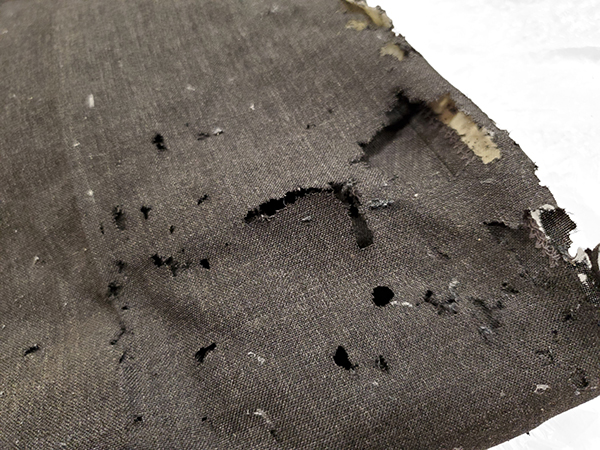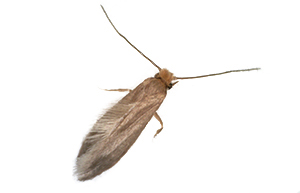

Clothes Moth Prevention
Clothes Moths Overview

Moths that cause problems for home and businessowners in southern New England fall into two categories: clothes moths or grain moths. A clothes moth infestation can be financially significant, causing serious damage to a variety of fabrics in your home. These pests have long life cycles, making clothes moth prevention efforts a necessity.
There are two main species of this insect in the United States: webbing clothes moths and casemaking clothes moths. Webbing clothes moths are much more common than casemaking clothes moths, but our treatments for both will be similar.
Where are They Found?

These moths are most commonly found in dark areas like drawers, closets, woolen carpets and wall hangings. Although they are capable of infesting other products, their preference is for fabrics made from animal fiber such as wool. They also prefer soiled fabrics, like those covered in sweat or urinated on by a pet.
What Makes Clothes Moths Harmful?

A clothes moth infestation often has a very innocuous beginning; a female moth flies in from outside or gets brought in on something infested, like a rug, and lays up to 200 eggs. The eggs hatch and the larvae (caterpillars) begin to feed and damage fabrics. The caterpillar stage is the damaging stage; the adult moths cause no harm to property. When it is time to pupate, the caterpillars spin cocoons and later emerge as adults, where they continue to infest the current fabric or disperse to find additional food sources for their young.
The average life cycle, from egg to reproductive adult, takes anywhere from 60 to 90 days. Under less suitable conditions, like at colder temperatures in a basement, it can take several years, usually making moth control a necessity once the moth damage has been discovered.
Signs Clothes Moths are Present in Your Home or Facility

Clothes moths will make holes in everything including dresses, sweaters, suits, coats, upholstery, rugs, blankets, furs and leather goods—so finding unexplained holes in your clothing is your number one hint that you have an infestation. One of the main signs is seeing silk or webbing on your fabrics or rugs, adjacent to damaged spots. You should also be on the lookout for the caterpillars which look like small white worms with dark heads.
Treatment

Prevention is key when it comes to dealing with this pest. If you’re wondering how to prevent clothes moths, your best method includes placing your wool clothes in tightly sealed storage bins or garment bags. Do not store any woolens in basements and attics without placing them in airtight containers first.
If you already have an infestation, Braman can help you determine how to kill clothes moths in your home. We take a holistic approach to the control of this pest; we’ll ask you to thoroughly vacuum infested rugs and recommend having your clothing and carpets professionally cleaned. After that, the following clothes moth removal methods and materials may be employed:
- Sticky pheromone traps to determine the level and extent of the infestation. They also aid by capturing male adult moths, hopefully before they find a female mate.
- Residual insecticides and insect growth regulators to treat areas such as under a couch skirt or structural cracks and crevices that could harbor moths and larvae.
- Heat treatment, which can be used in situations where there are many items that have the potential to be infested. Heating to 125°F will kill all life stages of a clothes moth. This can be done in a standard dryer or professionally at a laundromat.
Braman does not use mothballs, which have to be used at very high levels to be effective and contain toxic vapors.
If you suspect that you have a clothes moth control problem, contact us right away. You can be sure that Braman will work diligently with you to resolve the problem.

Tell us about your pest problem. We can provide a free estimate over the phone.
Call Braman 24/7 at 800-338-6757

